Sarah Zama's Blog, page 53
April 24, 2017
Urban Setting (1940s Film Noir – #AtoZChallenge)
 Just like in the 1920s, American cities had an explosion during the 1940s with remarkably similar emotional results. Cities grew fast, irrationally, disorderly, and were therefore bound to cause the same kind of problems to people they had already caused twenty years bofore. The tremendous graw was caused by workers flocking to the cities called by the availability of jobs, which often involved war-related production.
Just like in the 1920s, American cities had an explosion during the 1940s with remarkably similar emotional results. Cities grew fast, irrationally, disorderly, and were therefore bound to cause the same kind of problems to people they had already caused twenty years bofore. The tremendous graw was caused by workers flocking to the cities called by the availability of jobs, which often involved war-related production.
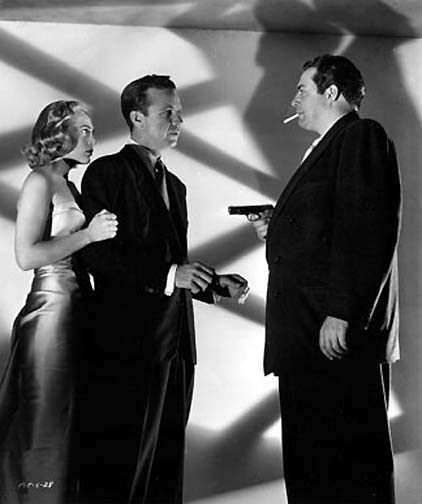
Pitfall
If they offered huge new possibilities both in terms of job, experience and entertainments, these sprawling cities were also places of psychological alienation as human relations tended to be more difficult. People didn’t know each other as it used to be in small country towns. An unconfortabel number of men and women from all walks of life gathered in crowded neighbourhoods and sometimes they didn’t share the same beliefs, ways of life, origins, not even the same language. Feeling a stranger was easy in such places.
Crime and the underworld flourished. Industrialisation created a fertile environment for moving money and for corruption.
A man could find himself caught in games that were far bigger them him, especially if he was in a position of inferiority and insecurity. Even the sound of the city was alien and mechanic, similar to the unwelcoming grounding of the mill machines. It was confusing and belittling. A person could easily fill just a little cog in a machine too big to be completely seen and understood.
In short, the urban environment of these new cities was the perfect set for film noir.
The new American city, modern and confusing, was the perfect set for #FilmNoir
Click To Tweet
——————————————————————————-
FILMS CITED
Pitfall (1948) by Andre DeToth
John Forbes is a family man who’s tired of the 9 to 5 humdrum of his job an insurance company executive. Life gets a little more exciting for him when he calls upon femme fatale Mona Stevens. Her boyfriend has robbed a store insured by Forbes’ company and has showered her with gifts using the loot. Forbes comes to collect the ill-gotten gifts, but the boyfriend is in jail, and Forbes falls hard for Mona and begins an affair. The only problem is that MacDonald, a private dick who freelances for the insurance company, has had his eyes on Mona first. The obsessed MacDonald turns the soon-to-be-released boyfriend against Forbes. (Movie Web synopsis)
——————————————————————————-
READ MORE ABOUT IT
Cindy Tsutsumi – 1940s American Film Noir
Smashwords | Barnes&Nobles | Kobo | iBookStore
And many other stores
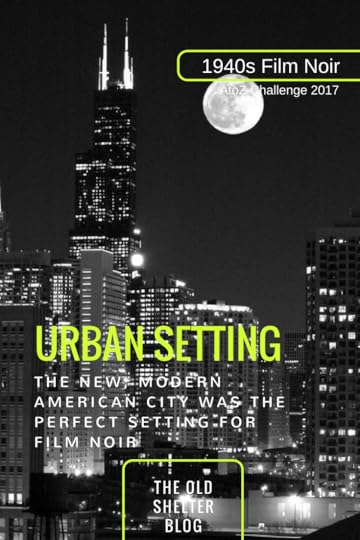
The post Urban Setting (1940s Film Noir – #AtoZChallenge) appeared first on The Old Shelter.
April 23, 2017
Transgression (1940s Film Noir – #AtoZChallenge)
 Uncertainty is one of the constant characteristics of noir stories. Goals and characters fined themselves in a situation of unbalance, therefore the possibility of transgression – both willing and accidental – becomes very likely.
Uncertainty is one of the constant characteristics of noir stories. Goals and characters fined themselves in a situation of unbalance, therefore the possibility of transgression – both willing and accidental – becomes very likely.
Transgression can go many ways – against social rules, against family roles, against the patriarchal law, against the law itself – but the trigger tends to be the same: the femme fatale.
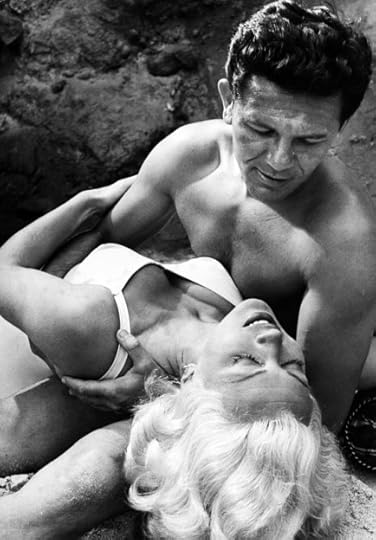
The Postman Always Rings Twice
Because the femme fatale is trying to advance her social position, she is naturally more ruthless than any man, because socially, she has s lot less to lose and a lot more to gain.
Marriage is one of the easier way to gain that advancement. Far from subjugating their desire and their identity to their men, these women marry in order to achieve financial and social advancement, often by manipulating men’s desires for them. The husband might not be suitable but he’s convenient. This inversion or perversion of the marital relation is often highlight by the fact that the husband is much older than the wife, or is physically impaired.
When the hero steps on stage, it is immediately apparent that this is a better suited mate for the femme fatale, and the problem doesn’t rise from her failure to recognise this, but from her refuse to accept the sacrifice of her desire which a relation with the hero would involve. The femme fatale isn’t willing to renounce the advancement marriage had given her, nor the fulfilment a relation with the hero would give her and so a transgression is necessary. This usually involves a marital transgression (the woman starts an illicit sexual relationship with the hero) and a law transgression (the lovers devise a plan to get rid of the husband, often involving murder).
When in The Postman Always Rings Twice Cora sees Frank, she immediatelly understands Frank is the best mate for her, and therefore her husband has to be done with. Simply leaving her husband won’t do, because she would lose her status and his money, and renouncing to Frank won’t do either, because that’s the life she wants. It’s as simple as this.
The many situations of unbalance in #FilmNoir make transgression very likely
Click To Tweet
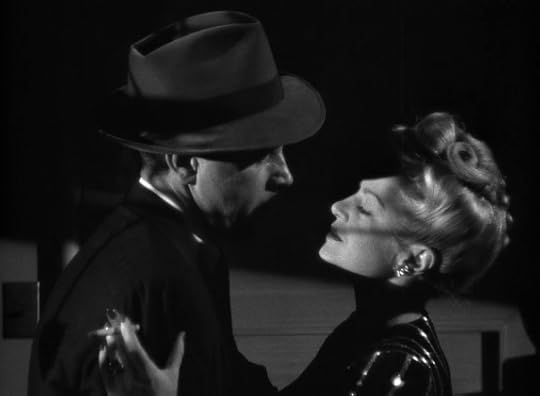
Murder , My Sweet
Film noir seldom offers any deeper motivation than this for the woman’s action. Her devious desires is what motivates her and what put in danger the male-defined cultural norm. As inherently ‘devious’, the woman doesn’t have as much to lose as the hero by transgressing against her acceptable social place. She moves the action, still film noir is never her story. The story is always about how the hero copes with her machinations.
In the denouement of The Maltese Falcon, Brigid O’Shaughnessy has a breakdown. She cries, pleading Spade to help her in spite of her crime. She is moving the dramatic action… and still she is not on stage. We hear her voice off screen, but the camera is on the hero, on his reaction to her action, because that’s what the story is concerned with.
The woman’s ‘otherness’ – highlighted by her becoming an erotic object – simultaneously attracts and disturbs the hero. She plays different games and with different rules from what’s accepted by the male regime and this fascinates the hero in spite of the danger. Her very sexual difference embodies the possibility of transgression, but it is not until the hero makes a pact with her that the transgressive trajectory of the criminal adventure is inaugurated. The hero is precisely attracted to the woman who sets herself against conventions. It is the very danger attached to the femme fatale that makes her desirable. And the hero does have a choice to resist… but often doesn’t. He accepts the transgression and the pact with the woman.
And this is what’s at the very core of every film noir: by setting in place scenarios of male alienation, victimisation, fatalistic despair and obsession, the tough thrillers offered and engagement with and – although in a disguised manner – an acknowledgement of a contemporary destabilisation of masculinity. This disjunction within and between masculine identity and social authority, often uniting in the form of sexual transgression.
——————————————————————————-
FILMS CITED
The Postman Always Rings Twice (1946) by Tay Garnett
Nick Smith (Cecil Kellaway), a middle-aged roadside diner owner, hires a drifter, Frank Chambers (John Garfield), to work at his restaurant. Frank quickly begins an affair with Nick’s beautiful young wife, Cora (Lana Turner), and the two conspire to kill Nick and seize his assets. When they succeed, local prosecutor Kyle Sackett (Leon Ames) becomes suspicious, but is unable to build a solid case. However, the couple soon realizes that no misdeed ever goes truly unpunished. (Google synopsis)
Murder, My Sweet (1944) by Edward Dmytrik
Hard-boiled detective Philip Marlowe (Dick Powell) hired by ex-con Moose Malloy (Mike Mazurki) to find his missing girlfriend Velma. Shortly thereafter, Marlowe is hired by socialite Mrs. Grayle (Claire Trevor) to find a valuable jade necklace that has been stolen from her. Marlowe finds the necklace and also finds blackmail, double crosses, corruption, and murder on both sides of the tracks. (Rotten Tomatoes synopsis)
——————————————————————————-
READ MORE ABOUT IT
Krutnik, Frank, In a Lonely Street. Routledge, 1991, London/NYC
Smashwords | Barnes&Nobles | Kobo | iBookStore
And many other stores
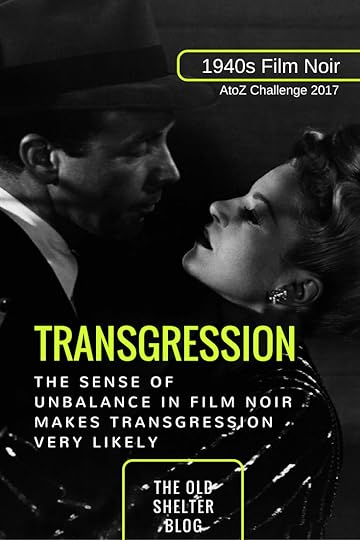
The post Transgression (1940s Film Noir – #AtoZChallenge) appeared first on The Old Shelter.
April 21, 2017
Suspense (1940s Film Noir – #AtoZChallenge)
 Suspense is a very different mode of narration than the detective story. Whereas the detective traditionally represents a stabilising element in the narration (he brings stability and truth where the criminal act had brought instability and fear), in the suspense thriller the position of the hero is very uncertain.
Suspense is a very different mode of narration than the detective story. Whereas the detective traditionally represents a stabilising element in the narration (he brings stability and truth where the criminal act had brought instability and fear), in the suspense thriller the position of the hero is very uncertain.
Far from being the bearer of truth, the suspense hero is often in a position of inferiority both from the police and the criminals, and often, even from the spectator. He becomes a very unreliable narrator both because he doesn’t know facts and because his obsession distorts the facts that he does know.
At its core, the suspense thriller is a story of instability and divided identities, where we are uncertain about the hero’s identity (as man and as hero) often until the very end.
Suspense is not, of course, specific to the 1940s ‘tough’ thrillers, but in these films it tends to occupy a specific place, serving to mark the protagonist’s lack of control.
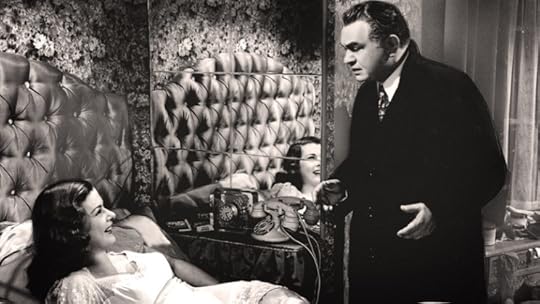
Scarlet Street
The position of the hero in #Film Noir is always very precarius. That's what create the suspense
Click To Tweet
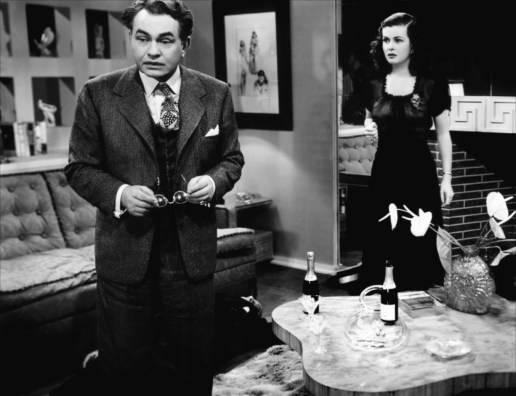
The Woman in the Window
Noir heroes are often swayed by a femme fatale who imposes her own truth (and so her own stability). Because the hero doesn’t know or doesn’t fully understand the reasons of the femme fatale, he finds himself in a precarious position, where he posesses few answers and need to pose a lot of questions, the more pressing of which is: should he trust the femme fatale?
This woman becomes an alternative source of authority, which endangers the hero’s position inside the law/patriarchal system, therefore his true identity.
The story oscillates between these two poles (the femme fatale’s alternative reality and the hero’s lawful position) so much that it becomes very difficult to establish a unified position of truth.
It’s precisely the delay in the revelation of the truth that makes up the suspense in the story.
This problematising of the hero as the centre of narrational truth mirrors a series of cultural schisms in 1940s society with regard to the relation between the social roles of men and women. What is involved here – and what is relevant in all film noirs – is not simply the postponement of the eventual triumph of the hero, both as hero and as man, but a more traumatic uncertainty as to whether such resolution is even possible.
——————————————————————————-
FILMS CITED
Woman in the Window (1944) by Fritz Lang
Edward G. Robinsonis a happily married psychology professor whose wife and child are away on summer vacation. After discussing with his friends the likelihood that any man can be driven to murder, Robinson strolls by a shop window, where stands a full-length portrait of a beautiful woman. He turns to find the selfsame woman (Joan Bennett) standing beside him…and before the night is over, he has killed the woman’s lover in self-defense. Thus begins weaving an increasing tangled web involving Robinson, the woman, and a seedy blackmailer (Dan Duryea). (Rotten Tomatos synopsis)
Scarlet Street (1945) by Fritz Lang
Stark, claustrophobic thriller about an anti-Semitic soldier who kills a Jewish war veteran, evading detection because of his loyal friends’ protection. However, a detective is determined that the crime will not go unsolved and sets about laying a trap for the murderer. (Rotten Tomatoes synopsis)
——————————————————————————-
READ MORE ABOUT IT
Krutnik, Frank, In a Lonely Street. Routledge, 1991, London/NYC
Smashwords | Barnes&Nobles | Kobo | iBookStore
And many other stores
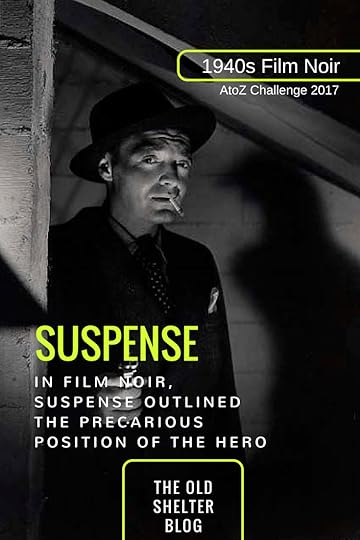
The post Suspense (1940s Film Noir – #AtoZChallenge) appeared first on The Old Shelter.
April 20, 2017
Resourcefulness (1940s Film Noir – #AtoZChallenge)
 With very few exceptions, film noirs were B movies filmed on a budget, even the ones that we now consider classics. They couldn’t afford lavish settings and mise-en-scène as other more funded Hollywood productions would, they had limited possibilities in terms of actual tools, props and times of productions. Very seldom they could rely on stars. In their collective effort of meeting certain standards of quality investing as little money as possible, film noir was less of a ‘director’ movie and more of a team effort.
With very few exceptions, film noirs were B movies filmed on a budget, even the ones that we now consider classics. They couldn’t afford lavish settings and mise-en-scène as other more funded Hollywood productions would, they had limited possibilities in terms of actual tools, props and times of productions. Very seldom they could rely on stars. In their collective effort of meeting certain standards of quality investing as little money as possible, film noir was less of a ‘director’ movie and more of a team effort.
Postwas economic boom produced the biggest revival of cinema attendance since the transition to sound at a time when Hollywood was facing a number of economic and artistic limitation. Studios actively encouraged their teams to find alternative forms of production values and experiment with new techniques which could be achieved with smaller investment of money and fewer risks of being censored.
Innovative as we consider them to be today, these were actually films produced by the studio system for commercial purposes and for the mainstream cinema rather that within the oppositional space of avant garde.
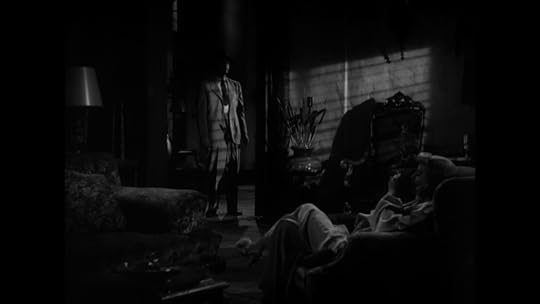
Double Indemnity
German Expressionism was a great inspiration. Thanks to the influx of technicians and directors from Germany before, during and after WWII, Hollywood could count on an army of professionals who were accustomed to cope with small investment of money but could still produce quality films.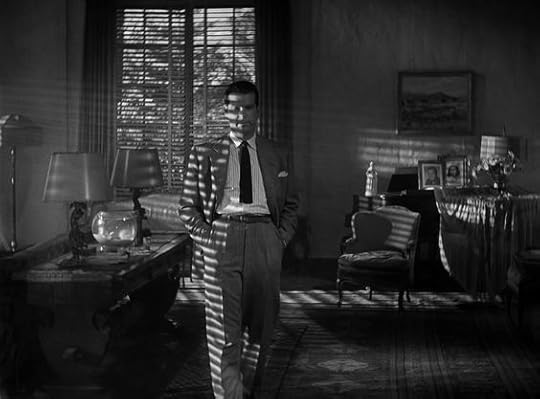
Practices such as chiaroscuro not only offered a strong mood to the film, but also allowed to use shabbier settings that would be hard to distinguish on screen in the semidarkness. Dark, sharp shadows helped create an ambience where sometimes only a white wall stood. The ever present venetian blind shadow created atmosphere while also giving a sense of entrapment and enhence the camera work.
Unusual camera angles allowed to strengthen the sense of unbalance so vital to these stories. Paranoid, grotesque dream sequences, often constructed with light more than any props, became an essential part of the plot.
#FilmNoir mastered the skill of achiving a good quality with very little money investment
Click To Tweet
Psychoanalysis was another essential tool. Because it was impossible to openly address the issues that were at the very core of film noir (murder and sexual manipulation above all), noir scripts used psychological innuendo so to suggests rather than show even very important passages of the film.
One of the most iconic examples of this form of suggestion is the scene of the murder in Double Indemnity. The murder is acted out in the car. Phyllis is driving, the husband sits beside her. Neff assaults the husband from the backseat and strangles him. But we don’t see any of this. All we see is Phyllis’s face as she drives on never looking at what’s happening in the seat beside her, the same way we never see what’s happening, but the expressions that pass across her face tell us everything we need to know, on so many levels. Dictated by the limitations of the Hays Code, this sequence where nothing is openly shown is possibly one of the most chilling in the history of thriller movies.
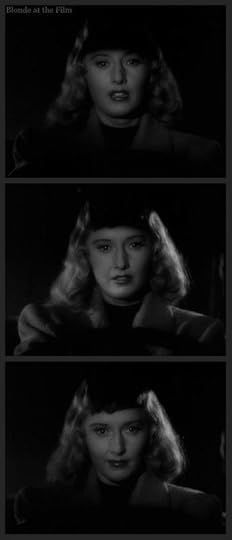
——————————————————————————-
FILMS CITED
Double indemnity (1944) by Billy Wilder
Insurance salesman Walter Neff (Fred MacMurray) meets a beautiful woman named Phyllis Dietrichson (Barbara Stanwyck), the wife of one of his clients, and they soon embark on an affair. In order for them to be together, Phyllis proposes to kill her husband, which will make her the beneficiary of his accident insurance policy, and Walter devises a scheme which will earn her double the insurance amount based on a double indemnity clause. When Phyllis’ husband is found dead on the train tracks, the police accept accidental death as an explanation. However, Walter’s best friend and fellow insurance agent Barton Keyes (Edward G. Robinson) suspects that Phyllis has murdered her husband with the help of another man and begins to investigate… (Hollywood Theatre synopsis)
——————————————————————————-
READ MORE ABOUT IT
Krutnik, Frank, In a Lonely Street. Routledge, 1991, London/NYC
Schrader, Paul. Note on Film Noir. Filmex (First Los Angeles International Film Exposition), Los Angeles, 1971
The Artifice – An In-depth Look at a Film Noir Classic
ScreenPrism – Why is Phyllis in “Double Indemnity” hailed as one of cinema’s greatest femme fatales?
Pop-Verse – Nostalgic Impulse: Double Indemnity
Smashwords | Barnes&Nobles | Kobo | iBookStore
And many other stores
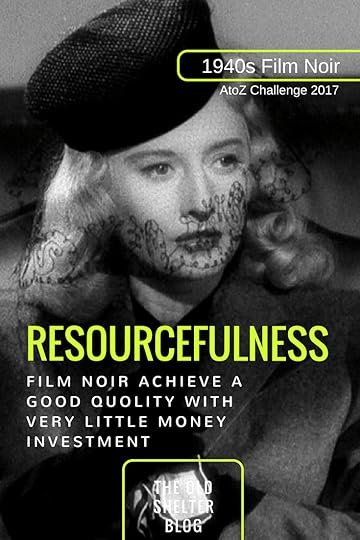
The post Resourcefulness (1940s Film Noir – #AtoZChallenge) appeared first on The Old Shelter.
Thursday Quotables – The Moscow Affair
A bustle of activity and the ground began falling away. The Deutschland was ascending into the evening sky. Our trip to Berlin had began. We looked out the windows and waved to the people below. Up we floated and then the distant thrumming of the engines began.
Von Neuradt leaned over and said in a subdued voice, “Lady Hurley-Drummond, we are honored to have on the Deutschland the famous swing band “The Templins’ and the very famous singer, Mimi Thoma. They will provide our entertainment tonight. Perhaps you will do me the honor of dancing with me.”
“My dear Herr von Neuradt, I didn’t know the German government endorsed swing.”
“The music of the German people is of course the most edifying of musical idioms, however Der Führer also recognizes the other people of the world may not share the same sentiments. At least not yet.”

You may remember CW Hawes from his excellent post on this blog about airship. He’s a great connoisseur of the subject and definitely airship are often featured in his stories. The first part of The Moscow Affair enfolds during an airship travel and I really enjoyed it. In fact, I even wished that section was longer. It was definitely my favourite part.
This is an alternate world where WWII never happened and in the 1950s the Reich is still firmly in command of large parts of Europe. In Russia, the revolution happened decades earlier, but the descendents of the Tzar are plotting to regain power… and they are doing this with a fierce partisan war. Most of the story concerns this clash of powers, and I found the ‘historical’ setting very interesting and plausible.
In many ways, the story starts out as a spy story, so I was a bit surprised that it ended up revolving mostly around a romance. Bit disappointing for me (because I’m not very big on romances), but still entertaining.
The Moscow Affair is the first novel in the From the Files of Lady Dru Drummond series .
—————————————————
In post is part of the Thursday Quotables meme. If you want to discover more about this meme and maybe take part in it, head over to Bookshelf Fantasies

The post Thursday Quotables – The Moscow Affair appeared first on The Old Shelter.
April 19, 2017
Quotes (1940s Film Noir – #AtoZChallenge)
 Film noir uses a very characteristic form of dialogue. We all know that noir privet detectives are streetwise, disillusioned and wisecracking, as well as we know that femme fatales are sensual and smooth anything they say.
Film noir uses a very characteristic form of dialogue. We all know that noir privet detectives are streetwise, disillusioned and wisecracking, as well as we know that femme fatales are sensual and smooth anything they say.
Dialogue was very important in film noir, because, as much as the plot relied on action, some of this action happened in dialogues. In fact, dialogue was one of film noir secret weapons, one of those means filmmakers used so to replace more lavish formed of filmmaking which they could not afford or addressed adult matters which the Hays Could would not allow.
So, as it happened, film noir transformed a limitation into one of its strongest features.
Is there anything more entertaining than a #FilmNoir dialogue?
Click To Tweet
——————————————————————————-
FILMS CITED
The Third Man (1950) by Carol Reed
Set in postwar Vienna, Austria, “The Third Man” stars Joseph Cotten as Holly Martins, a writer of pulp Westerns, who arrives penniless as a guest of his childhood chum Harry Lime (Orson Welles), only to find him dead. Martins develops a conspiracy theory after learning of a “third man” present at the time of Harry’s death, running into interference from British officer Maj. Calloway (Trevor Howard) and falling head-over-heels for Harry’s grief-stricken lover, Anna (Alida Valli). (Google synopsis)
To Have and Have Not (1948) by Howard Hawks
In Vichy France, fishing boat captain Harry (Humphrey Bogart) avoids getting involved in politics, refusing to smuggle French Resistance fighters into Martinique. But when a Resistance client is shot before he can pay, Harry agrees to help hotel owner Gerard (Marcel Dalio) smuggle two fighters to the island. Harry is further swayed by Slim (Lauren Bacall), a wandering American girl, and when the police take his friend Eddie (Walter Brennan) hostage, he is forced to fight for the Resistance. (Google synopsis)
——————————————————————————-
Smashwords | Barnes&Nobles | Kobo | iBookStore
And many other stores
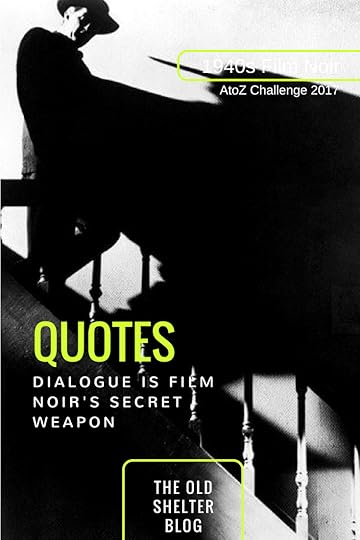
The post Quotes (1940s Film Noir – #AtoZChallenge) appeared first on The Old Shelter.
April 18, 2017
Psychoanalysis (1940s Film Noir – #AtoZChallenge)
 Between the emergence of the hard boiled form of crime fiction in the 1920s and their adaptation by Hollywood for the screen in the 1940s, Freudian psychoanalysis had been extensively popularised in American culture, to the point that the its basic concepts were familiar to most audiences.
Between the emergence of the hard boiled form of crime fiction in the 1920s and their adaptation by Hollywood for the screen in the 1940s, Freudian psychoanalysis had been extensively popularised in American culture, to the point that the its basic concepts were familiar to most audiences.
This allowed Hollywood to entrenched this form of storytelling into its film with a reasonable certainty that audiences would catch the gist. This vulgarised common knowledge became the base for a spectacular display of visuals, often translated into dream sequences, which became quite commonplace in American cinema, and quite distinctively in film noir.
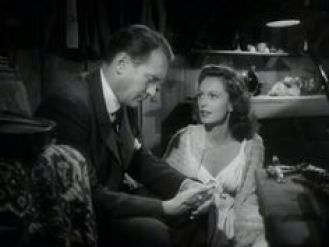
Whirlpool
In many films, the psychiatric appears as a character, who often has the same role as the detective: he must discover the reasons for a criminal behaviour, which, interestingly, is often on the part of women. This configures the psychiatric as someone in the service of male rationality and patriarchal cultural authority, whereas the woman represents the devious desire to seeks a different form of reality.
It is also interesting how psychoanalysis is presented as a rationalist science, but it’s the means by which a complex and potentially destabilising undercurrent of excessive and disordered desire is expose, which eludes easy rationalisation. In many ways, it is a form of uncertainty more than a means of upholding law effectively.
In Cat People we do have a character psychiatrist and we can see all his shortcomings. In fact, not only he is unable to solve Irena’s ‘problem’ (of which, by the way, she’s completely aware of, so she strictly doesn’t need a psychiatrist for that), but he completely misread it. As a patriarchal hero, Dr Judd is unable to see the true problem and so of course implies means that are completely ineffective. Quite an interesting twist to the noir hero.
The psychoanalyst, like the hero, must solve the mystery at the core of #FilmNoir
Click To Tweet
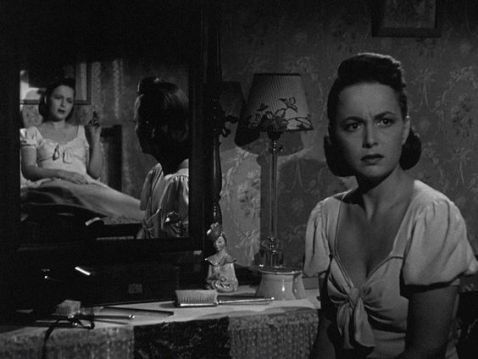
The Dark Mirror
But there’s a more interesting way in which psychoanalysis insinuated itself in the logic of Hollywood films in the 1940s. Audiences familiar with the basic concepts of the psych started to have new expectations about how characters would actually react in particular circumstances. Film noir dealt with some very serious issues of trust, betrayal, sexual control, murder, which on the one hand created very specific expectations from the audience and on the others couldn’t openly be addressed under the Hays Code.
Psychoanalysis provided a common language on which filmmakers and audiences could understand each other on the base of allusions and suggestions. It allowed the creation of a new suggestive language (and form of dialogue) that became very characteristic of film noir.
——————————————————————————-
FILMS CITED
Cat People (1942) by Jacques Tourneu
Irena Dubrovna (Simone Simon), a New York City–based fashion designer who hails from Serbia, begins a romance with marine engineer Oliver Reed (Kent Smith). After the couple gets married, Oliver becomes concerned about Irena’s notion that she is cursed and may transform into a large cat in the heat of passion. Confiding in his beautiful assistant, Alice Moore (Jane Randolph), about his marital issues, Oliver unwittingly triggers Irena’s curse, with tragic results. (Google synopsis)
The Dark Mirror (1946) by Robert Siodmak
After a doctor is murdered, Lt. Stevenson (Thomas Mitchell) questions the man’s girlfriend, Terry Collins (Olivia de Havilland). Sensing that she’s keeping a secret, Stevenson confronts Terry in her home, where he meets her identical twin sister, Ruth (also de Havilland). Both women appear exactly alike, sometimes even posing as each other. However, when twin expert Dr. Elliott (Lew Ayres) analyzes the sisters, he finds that one twin is normal, while the other is psychotic — but which one? (Google synopsis)
Whirlpool (1949) by Otto Preminger
Plagued by an overwhelming urge to shoplift, Ann Sutton (Gene Tierney) is helped out of a tight spot by David Korvo (Jose Ferrer). Unfortunately for Ann, Korvo is a conniving hypnotist who draws her into a web of deception and murder through his mind-altering abilities and frames her for his misdeeds. While Ann’s psychiatrist husband, Bill (Richard Conte), believes that his wife didn’t commit the crimes, Korvo’s devious scheme makes proving her innocence quite difficult. (Google synopsis)
——————————————————————————-
READ MORE ABOUT IT
Krutnik, Frank, In a Lonely Street. Routledge, 1991, London/NYC
Americana – Psychology in American Film Noir and Hitchcock’s Gothic Thrillers
Smashwords | Barnes&Nobles | Kobo | iBookStore
And many other stores
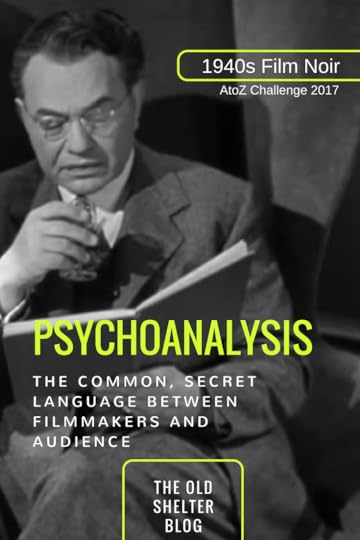
The post Psychoanalysis (1940s Film Noir – #AtoZChallenge) appeared first on The Old Shelter.
April 17, 2017
Obsession (1940s Film Noir – #AtoZChallenge)
 The erosion of the confidence in legitimising the framework of masculine authority (represented in film noir by the cultural system of law, business and family) is at the very core of all film noirs. Noir heroes experience a downfall, some sort of deep crises, from which oftentimes they never recover. This happens because, to some extend, they are willingly accepting that downfall. They willingly fall to the desires of the femme fatale, or willingly accept that the whirlwind of events they find themselves involved with is hopelessly out of their control.
The erosion of the confidence in legitimising the framework of masculine authority (represented in film noir by the cultural system of law, business and family) is at the very core of all film noirs. Noir heroes experience a downfall, some sort of deep crises, from which oftentimes they never recover. This happens because, to some extend, they are willingly accepting that downfall. They willingly fall to the desires of the femme fatale, or willingly accept that the whirlwind of events they find themselves involved with is hopelessly out of their control.
In the second half of the 1940s, ‘tough’ thrillers moved away from the more classic whodunit to become more characteristically ‘paranoid man’ films. ‘Tough’, controlled masculinity increasingly becomes an ideal, more than an achievable goal, something that may never be taken for granted and for which a man has to fight.
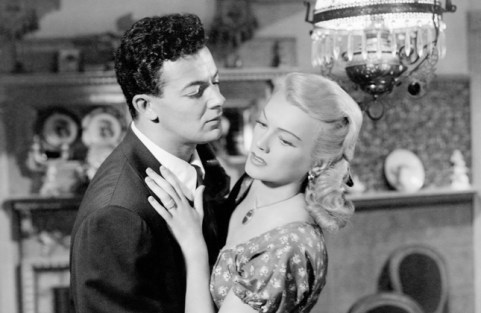
Shockproof
The way to achieve some form on unity is lived by the hero as an obsession. Disconnected from reality, immerse in his own world and acceptable value codes, the hero identifies something that might be able to give him a sense of wholeness – very often this is a woman – but this is just in his mind. He convinces himself that a particular achievement can unify his broken identity and he pursues that goal obsessively, regardless of the proven reality.
In Shockproof, for example, parole officer Griff convinces himself that he can give a new life to Jenny, his parolee, so he goes to a great length, even beyond what would be admissible to him, to get her in his house and make her his wife. Jenny not only is not taken to him, but she’s not at all the person she thinks she is. She even tries to be the one he wants, but that’s just not her. But Griff wouldn’t see it and keeps pursuing his unattainable dream.
Obsessively pursuing a fantasy. The #FilmNoir hero's maladjustment to the world #AtoZChallenge
Click To Tweet
Quite clearly, the obsession once again speaks of the hero’s vulnerability, his maladjustment, even his desperation. Once again it speaks of the male desire to control the female role, though that is ostensibly out of his hands.
This becomes even more apparent if on the other side there’s a woman – the object of the hero’s obsession – who knows exactly what she wants and wields her power so to achieve that goal. A woman who has all the characteristics the hero lacks (a phallic woman, she has sometimes be termed), to the point that she usurps the hero’s social position of mover of events.
Subjecting himself to her and to his obsessive desire of her is the way the hero seeks to find his lost self… and the reason why he’s destined to fail.
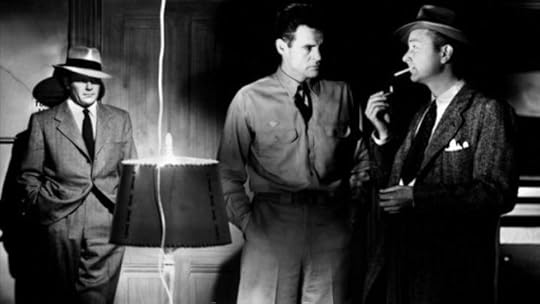
Crossfire
——————————————————————————-
FILMS CITED
Shockproof (1949) by Douglas Sirk
Jenny Marsh (Patricia Knight) is a hard-luck dame who’s just finished five years in the slammer for killing a man. Jenny’s not exactly the murdering type — she did the deed while defending her jailbird lover, Harry (John Baragrey), which is probably one reason she’s attracted the attention of her parole officer, Griff Marat (Cornel Wilde). In fact, Griff is so taken with Jenny that he gets her a job caring for his ailing mother, but although Jenny tries to fly right, she’s not yet over Harry. (Google synopsis)
Crossfire (1947) by Edward Dmytryk
Stark, claustrophobic thriller about an anti-Semitic soldier who kills a Jewish war veteran, evading detection because of his loyal friends’ protection. However, a detective is determined that the crime will not go unsolved and sets about laying a trap for the murderer. (Google synopsis)
——————————————————————————-
READ MORE ABOUT IT
Krutnik, Frank, In a Lonely Street. Routledge, 1991, London/NYC
Schrader, Paul. Note on Film Noir. Filmex (First Los Angeles International Film Exposition), Los Angeles, 1971
Smashwords | Barnes&Nobles | Kobo | iBookStore
And many other stores
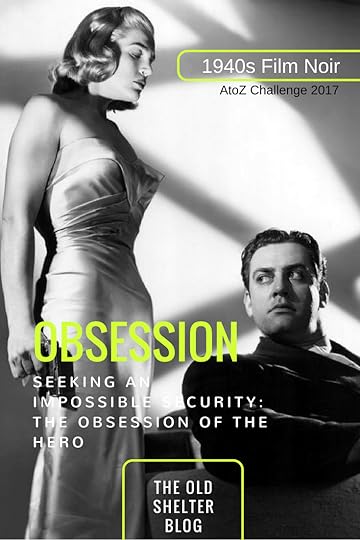
The post Obsession (1940s Film Noir – #AtoZChallenge) appeared first on The Old Shelter.
April 16, 2017
Neo Noir (1940s Film Noir – #AtoZChallenge)
 Generally speaking, the term film noir refers to crime thrillers, crime dramas, heist films and chase film produced from the late 1930s to the early 1950s, though many critics stretch the period as far as Orson Wells’ Touch of Evil (1958) and indicated that as the last film noir.
Generally speaking, the term film noir refers to crime thrillers, crime dramas, heist films and chase film produced from the late 1930s to the early 1950s, though many critics stretch the period as far as Orson Wells’ Touch of Evil (1958) and indicated that as the last film noir.
These film didn’t come from an organic, intentional creativity, but rather they spontaneously emerged from a particular social and historical context and very specific industry circumstances. At the time they were produces, nobody (neither the filmmakers, nor the audience) ever had a notion that this were anything other then common thrillers. It was only retrospectively (in the 1950s) and from an outside look (French cinema critics) that a unity of themes, narrational devises and visual effects was noted and consolidated into a new concept and possibly a new style or genre.
Neo Noir refers to post-1960s films of similar content and expression, but which consciously employ noir stylistics and conventions. Neo noir alludes to classic noir, either implicitly or explicitly, building on what is now recognised and accepted as a distinct body of films.
Where the unity of classic film noir happend spontanously in response to the time and society that kind of film spoke to, neo noir is the appropiation of that language so to contiously send a specific message. Neo noir self-consciously revised the noir tradition in a contemporary idiom.
Although neo noir started to present its first offerings in the 1960s, it’s in the 1970s that this form of film started to come into its own, with many critics indicating Chinatown as the first neo noir.
It was in this same period that Anglo-American criticism first started to recognise and discuss film noir as a unified body of films, whereas it had previously been mostly a European concern.
French Film Noir
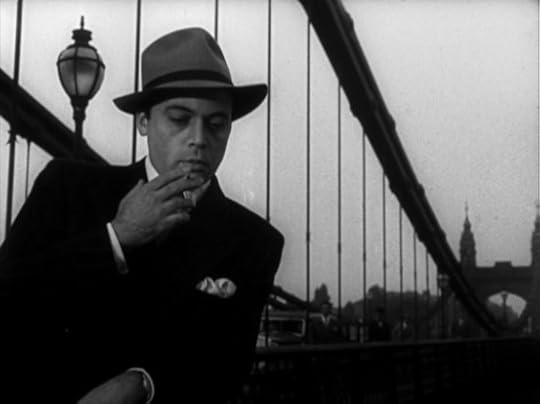
Rififi
I would like to mention French Film Noir as its own topic here. French Film Noir didn’t derive from American film noir. It developed independently and in parallel with it, during the same years – if over a longer stretch of time. In many respects, French Film Noir addressed the same kind of issues in slightly different ways, which may explain why the French film critics were sensitive in detecting a similar experience in Hollywood cinema.
Although dark melodramas and crime cinema already existed in France in the silent period, it was only with the advent of sound that French Film Noir really come into its own form of expression, around the early 1930s.
Many different elements worked toward its rise:
Poetic Realism – A kind of dark, melodramatic film that fused together a realistic depiction of working class life with a poetic, lyric style. This is not confined to cinema. French writers had been fascinated with the underbelly of society, the bass-fonds (‘low depths’) from the very early modern period and particularly in the XVIII century roman noir. Authors like Victor Hugo and Honoré de Balzac wrote stories about poor people and criminals living at the margins of big cities.
The XIX century saw a shift in the attitude of authors towards these subjects, probably due to the Romantics’ interest with bohemian life. Revulsion turned to fascination as authors continue to represent poverty, vice and crime, but observed it with a greater poetic sensibility.
By the 1920s, this kind of sensitivity pervaded many stories and it’s in this cultural environment that Belgian author George Simenon wrote his mystery novels where crime is located in the everyday. When poetic realism migrated into cinema, George Simenon became one of the riches single sources for French Film Noir.
German Expressionism – Just like in Hollywood, the Expressionist school had a great influence in how film were done in France as many German émigrés passed through France on their way to the US. Some of these directors and cinematographer only staid a little while, though left their mark on the French cinema. Others stayed and trained a new generation of French cinematographers.
Photography – In the 1930s, Paris became a magnet for photography experimentation, attracting many foreign photographers, particularly Central and Eastern European émigrés fleeing from the rise of the Nazis. These photographers experimented with light and shadows, not unlike the Expressionists, and were fascinated, like French artist, by the underbelly of society.
Bressaï was one of the most famous. His collection The Secret Paris of the 1930s, with his nocturnal low life depicted in a dense, inky idiom is one of his most recognised works.
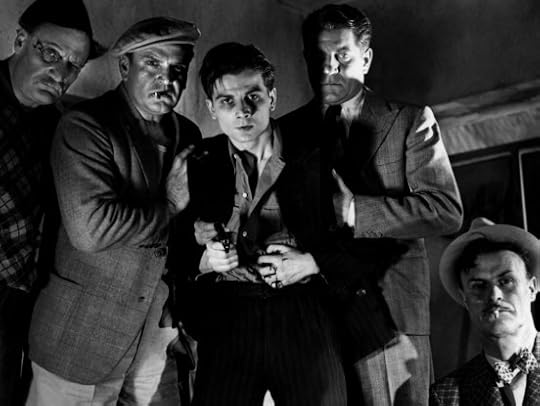
Pèpé le Moko
French Film Noir married an international visual style with a minute observation of French life.
As a production of popular culture, it didn’t take a particularly political stance toward social issues, but it wasn’t a mere representation of society either. French Film Noir definitely addressed traumatic social context, particularly between the wars and after WWII: the rise of the fascism in the 1930s, the left-wing Popular Front alliance of 1936-1938, the war and the German occupation of 1940-1944 as well as the postwar advent of American-inflicted modernity were all issues touched upon in these films.
Just like American Film Noir, French Film Noir is a masculine observation of life and an expression of male vulnerability and anxiety, brimming with men falling prey of a cruel fate or victims of an alluring female.
Women in French Film Noir are usually marginalised and often degraded characters, which speaks of the male’s anxiety towards women’s shifting role in French society. As in the American noir, these women don’t have much of a narrational agency, but – with very few exceptions – they are denied the transgressive power of the femme fatale or the alternative role of the ‘good girl’ of their American counterparts.
French Film Noir developed independently and in paraller to American #FilmNoir
Click To Tweet
It was overall a very pessimistic outlook on life that attracted disapproval in many quarters (though not from the censors, as it happened in Hollywood) but certainly appealed to a vast audience well into the 1960s.
——————————————————————————-
FILMS CITED
Chinatown (1974) by Roman Polanski
When Los Angeles private eye J.J. “Jake” Gittes (Jack Nicholson) is hired by Evelyn Mulwray to investigate her husband’s activities, he believes it’s a routine infidelity case. Jake’s investigation soon becomes anything but routine when he meets the real Mrs. Mulwray (Faye Dunaway) and realizes he was hired by an imposter. Mr. Mulwray’s sudden death sets Gittes on a tangled trail of corruption, deceit and sinister family secrets as Evelyn’s father (John Huston) becomes a suspect in the case. (Google synopsis)
Pépé le Moko (1946) by Julien Duvivier
Pépé le Moko (Jean Gabin), one of France’s most wanted criminals, hides out in the Casbah section of Algiers. He knows police will be waiting for him if he tries to leave the city. When Pépé meets Gaby Gould (Mireille Balin), a gorgeous woman from Paris who is lost in the Casbah, he falls for her. She also reminds him of all the things he loves about Paris. Even as Pépé knows he is being trailed by Inspector Slimane (Lucas Gridoux), he considers a future with Gaby. (Google synopsis)
Rififi (1956) by Jules Dassin
Out of prison after a five-year stretch, jewel thief Tony (Jean Servais) turns down a quick job his friend Jo (Carl Mohner) offers him, until he discovers that his old girlfriend Mado (Marie Sabouret) has become the lover of local gangster Pierre Grutter (Marcel Lupovici) during Tony’s absence. Expanding a minor smash-and-grab into a full-scale jewel heist, Tony and his crew appear to get away clean, but their actions after the job is completed threaten the lives of everyone involved. (Google synopsis)
——————————————————————————-
READ MORE ABOUT IT
Krutnik, Frank, In a Lonely Street. Routledge, 1991, London/NYC
Crime Culture – An Introduction to Neo Noir
On Screen – Neo Noir
MUBI – French Film Noir
BFI Film Forever – How the French Birthed Film Noir
Cine College – Film Noir
Smashwords | Barnes&Nobles | Kobo | iBookStore
And many other stores
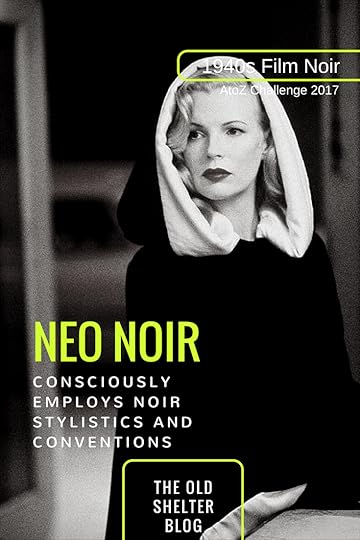
The post Neo Noir (1940s Film Noir – #AtoZChallenge) appeared first on The Old Shelter.
April 14, 2017
Masculinity (1940s Film Noir – #AtoZChallenge)
 The preferred source of film noir, the hard boiled novel, manifests an obsession with the possibility of ‘disconnected subjectivity’. Because it’s a suspense story, there are delays and complications in the solution of the enigma, but in addition to this, the determination of the hero’s identity as a unified subject is also delayed. There are insecurities and flaws that crack the hero’s personality as a solid creator of reality, so that his place in society, his power as history-changer and his centrality as power-wilder becomes questioned.
The preferred source of film noir, the hard boiled novel, manifests an obsession with the possibility of ‘disconnected subjectivity’. Because it’s a suspense story, there are delays and complications in the solution of the enigma, but in addition to this, the determination of the hero’s identity as a unified subject is also delayed. There are insecurities and flaws that crack the hero’s personality as a solid creator of reality, so that his place in society, his power as history-changer and his centrality as power-wilder becomes questioned.
Post-1944 (and so post WWII) film noir also tend to focus his attention on this issue.
These stories are most often concerned with the aims, ambitions and activities of a male protagonist who proves and defines himself by his ability to overcome the challenges to his life and to his integrity which the story throws at him. This hero seeks to prove his competence by outwitting the criminals and by triumphing over the dangers represented by the feminine – not just women in themselves, but any ‘non-tough’ potentialities of his own identity as a man.
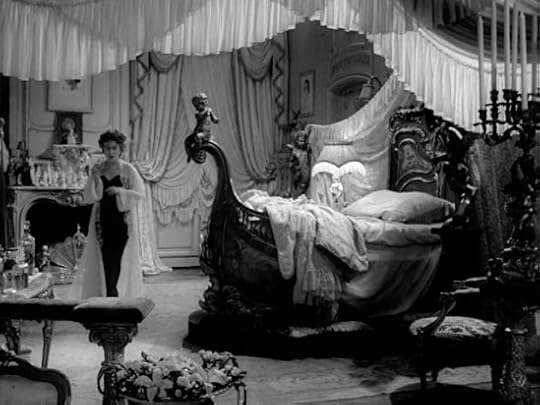
Sunset Boulevard
In Sunset Boulevard, Joe Gilles tries to use silent film star Norma Desmond’s influence to make a life and a career on his own. But Norma’s ‘gifts’ come at a price: he is forced to accept her blaickmails in terms of lust and economical security, and in so doing he gives up his integrity and his ability to determine his own life. These non-tough characteristics (leaning on the welth and desires of a woman and the willingness to give in to ther) is what ultimately doom him.
The noir hero often fails. He has shrunken world aspirations. He let basic impulses guide him. Very often, for a reason or another, he is not in control of his life. In short, he doesn’t look at all what traditionally heroes are supposed to look like. He is a traumatised heroe, incapable or unwilling to use his traditional position of prominence to mould his life and identity. And still, in this films, he is glamorised to the point that, in spite of all the heroic features he lacks, he is undeniably the centre of events. The hero becomes an anti-hero, but still engages the viewer as the center of identification.
He often fails. He has shrunken world aspirations. He let basic impulses guide himself #FilmNoir
Click To Tweet
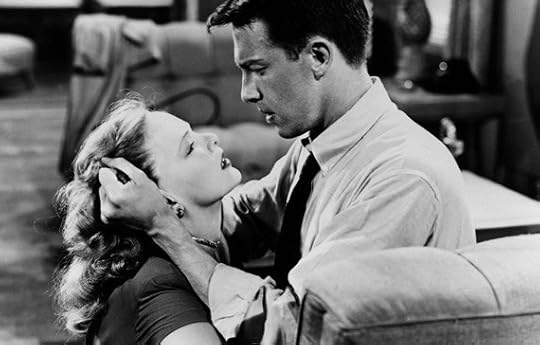
Gun Crazy
The character’s arc still seems to have a traditional trajectory of ‘power, omnipotence, mastery and control’, where the hero sets out to prove his worth by overcoming any test the story presents to him, but the outcome is very different. All of the hero’s efforts result in failure, or succeed only narrowly or at a great cost.
In this way, the narration creates a disjunction between the image the male protagonist has of himself and his actual possibility to make that image real.
Within the context of a fictional mode which has the glorification of masculine achievements as its apparent aim, film noir was able to open up a problematic discourse that was otherwise avoided in contemporary 1940s society. That there was such a market for these dissonant and schismatic representation of masculinity is evidence of some kind of crises of confidence within the contemporary regimentations of male-dominated culture.
——————————————————————————-
FILMS CITED
Sunset Boulevard (1950) by Billy Wilder
An aging silent film queen refuses to accept that her stardom has ended. She hires a young screenwriter to help set up her movie comeback. The screenwriter believes he can manipulate her, but he soon finds out he is wrong. The screenwriters ambivalence about their relationship and her unwillingness to let go leads to a situation of violence, madness, and death.(Google synopsis)
Gun Crazy (1950) by Joseph H. Lewis
When gun-obsessed pacifist Bart Tare (John Dall) witnesses expert shooter Annie Laurie Starr (Peggy Cummins) demonstrate her firearm prowess at a carnival one night, it’s love at first sight. Aimless Bart joins the traveling show and begins a romance with Annie, but her dangerously rebellious spirit soon gets them both fired. After eloping, the young lovers embark on an armed robbery spree, managing to elude the authorities until Annie insists on pulling one last job. (Google synopsis)
——————————————————————————-
READ MORE ABOUT IT
Krutnik, Frank, In a Lonely Street. Routledge, 1991, London/NYC
Smashwords | Barnes&Nobles | Kobo | iBookStore
And many other stores
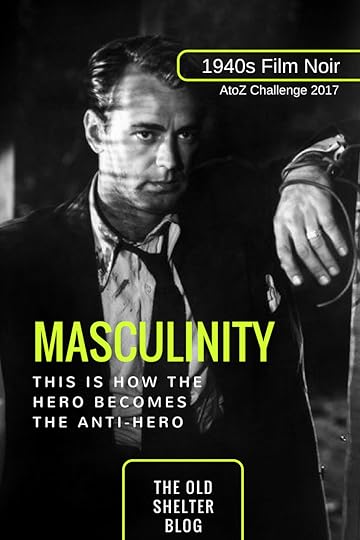
The post Masculinity (1940s Film Noir – #AtoZChallenge) appeared first on The Old Shelter.



